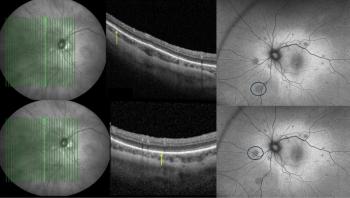
Glaucoma device controls IOP in high-risk PK
The Ahmed glaucoma device (AGD) effectively controls intraocular pressure (IOP) with high-risk penetrating keratoplasty, reveal the findings from a study in the journal Cornea.
The Ahmed glaucoma device (AGD) effectively controls intraocular pressure (IOP) with high-risk penetrating keratoplasty, reveal the findings from a study in the journal Cornea.
Dr Almousa Radwan et al., The Corneoplastic Unit and Eye Bank, Queen Victoria Hospital, East Grinstead, West Sussex, UK, conducted a retrospective, non-comparative case series on 59 eyes that had high-risk PK. All patients underwent AGD insertion and the primary outcome measures were IOP control between 6 and 21 mmHg and corneal graft survival. The secondary outcome measures were risk factors linked with IOP control and corneal graft survival.
The team found that mean IOP reduced significantly after AGD insertion, with a median follow up of 78 months after insertion. IOP control was effective in 44 eyes with 96% of eyes maintaining IOP at 1 year, 87% at 2 years, 83% at 3 years and 83% at 5 years.
The percentage of clear corneal grafts after 1, 2, 3 and 5 years after AGD insertion were 87%, 77%, 65% and 47%, respectively. Post-valve surgery doubles the risk of failure to control IOP, but AGD effectively maintains IOP.
The abstract can be accessed
Newsletter
Get the essential updates shaping the future of pharma manufacturing and compliance—subscribe today to Pharmaceutical Technology and never miss a breakthrough.













































